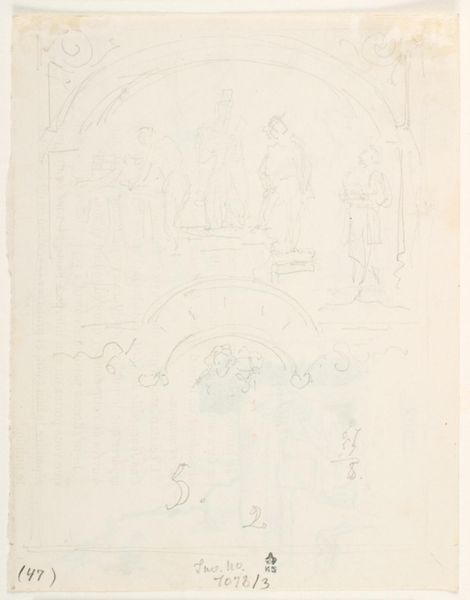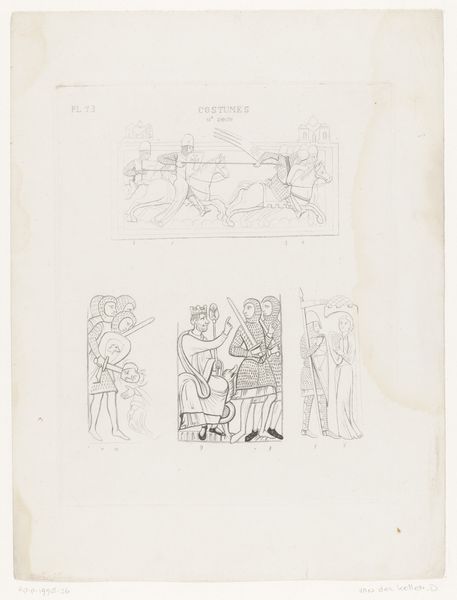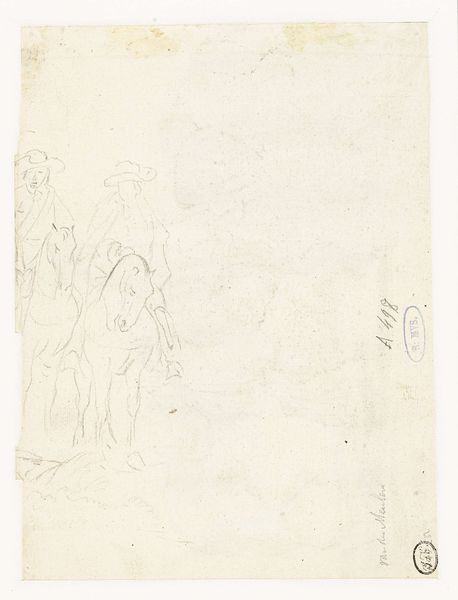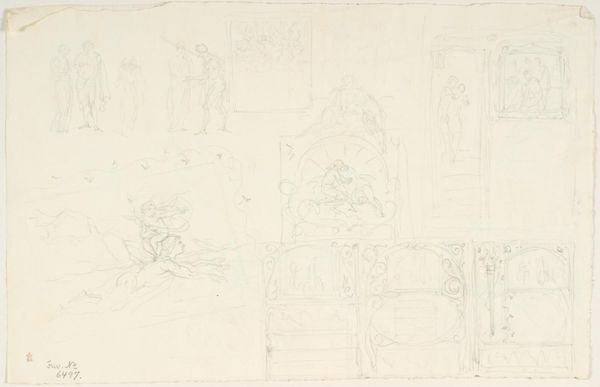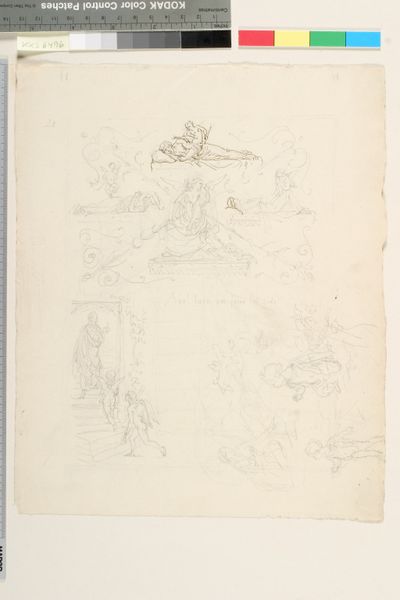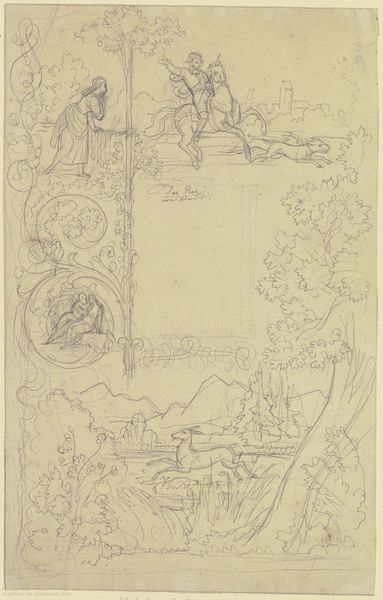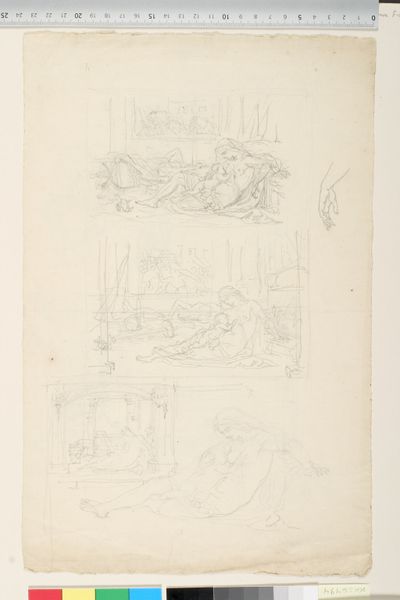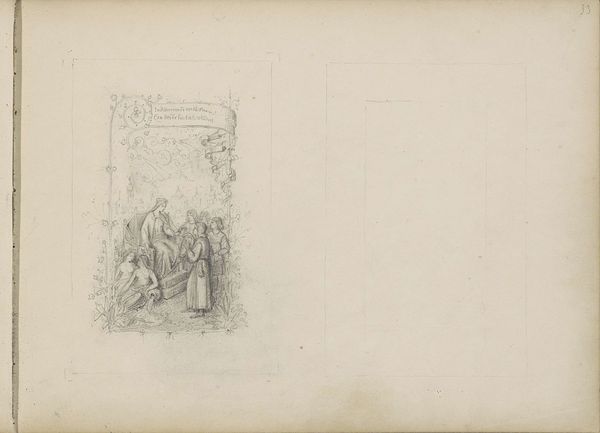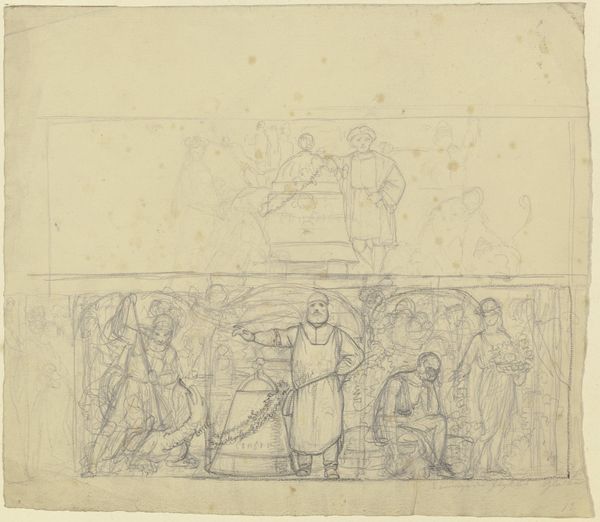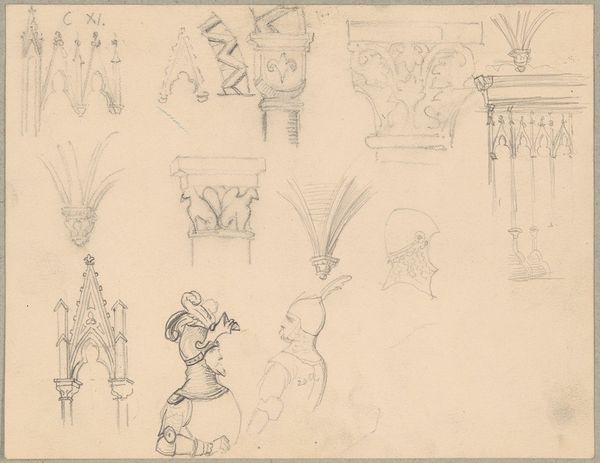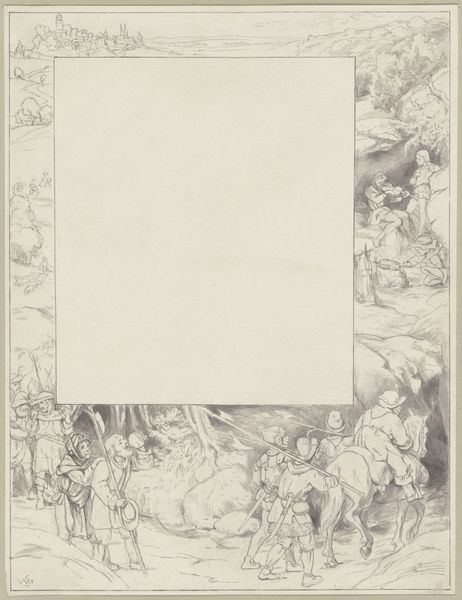
drawing, paper, pencil
#
drawing
#
narrative-art
#
landscape
#
etching
#
figuration
#
paper
#
pencil
Dimensions: 365 mm (height) x 236 mm (width) (bladmaal)
Curator: This work, "Forskellige skitser" by Lorenz Frølich from 1860, immediately suggests a peek into the artist's mind. What do you see, coming at it fresh? Editor: Well, first, it looks like a page filled with multiple sketches, all in pencil on paper. Some seem to depict figures, others landscapes, and they are arranged almost like studies within decorative borders. The overall feel is… tentative, like the artist is exploring ideas. How would you interpret these seemingly disparate elements? Curator: As a historian, I see this as an insight into 19th-century artistic practice. Frølich, a celebrated illustrator and history painter, probably used such sheets for experimenting with compositions, themes, or motifs for larger projects. Consider how art academies trained artists: preliminary drawings, like these, were crucial for mastering form and narrative. Are there figures or scenes here that look familiar to you, perhaps from other artworks or historical narratives? Editor: There are definitely some figures that appear classical or biblical, and then equestrian scenes that recall battle scenes. The bordering frames look vaguely classical, but perhaps with a decorative edge common to the mid-19th century. It feels like Frølich is toying with established themes. What does this say about the artist's role in that socio-political moment? Curator: Precisely. This hints at the complex relationship between academic training and artistic innovation during this time. Artists were often expected to uphold established conventions and reinforce national narratives, and perhaps to critique them. By playing with these familiar forms in sketch form, Frølich might be probing the very nature of historical representation. Do you think the very act of creating preparatory sketches humanizes the process and potentially democratizes access to monumental art? Editor: That's a fascinating idea! I hadn't thought about how seeing the artist's process, rather than just a finished, polished product, could change our relationship to the artwork. It's like seeing behind the curtain. Curator: Yes, understanding the socio-political and institutional context is essential for uncovering what truly informed his artistic expression. These “skitser” give us an informal yet essential look into how a national visual culture was crafted in that moment. Editor: Thank you. It’s also been instructive to look at this and understand a way that academic history can shed new light on a set of works such as these, in sketch form, that otherwise might have appeared inaccessible to wider social interpretations.
Comments
No comments
Be the first to comment and join the conversation on the ultimate creative platform.
